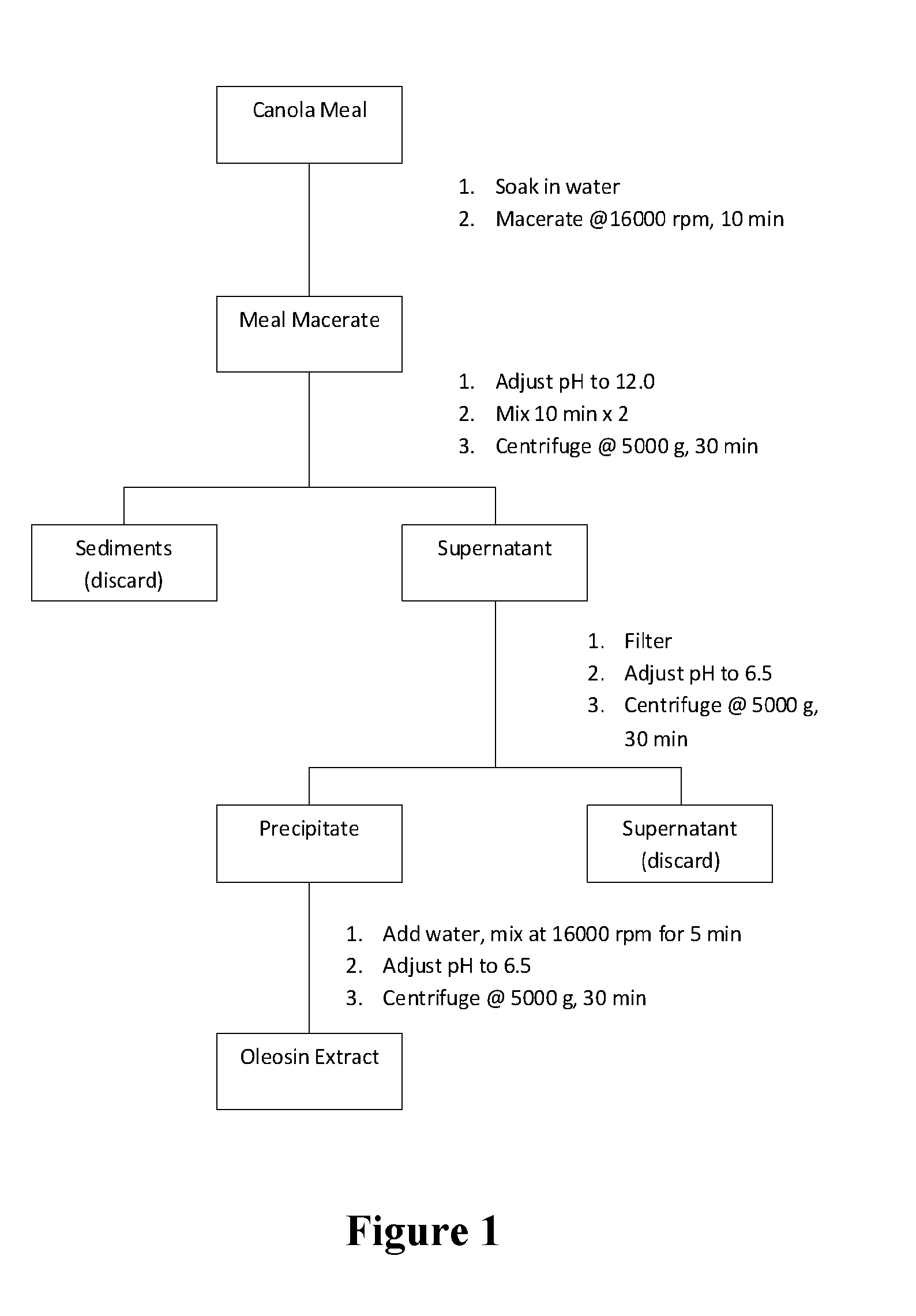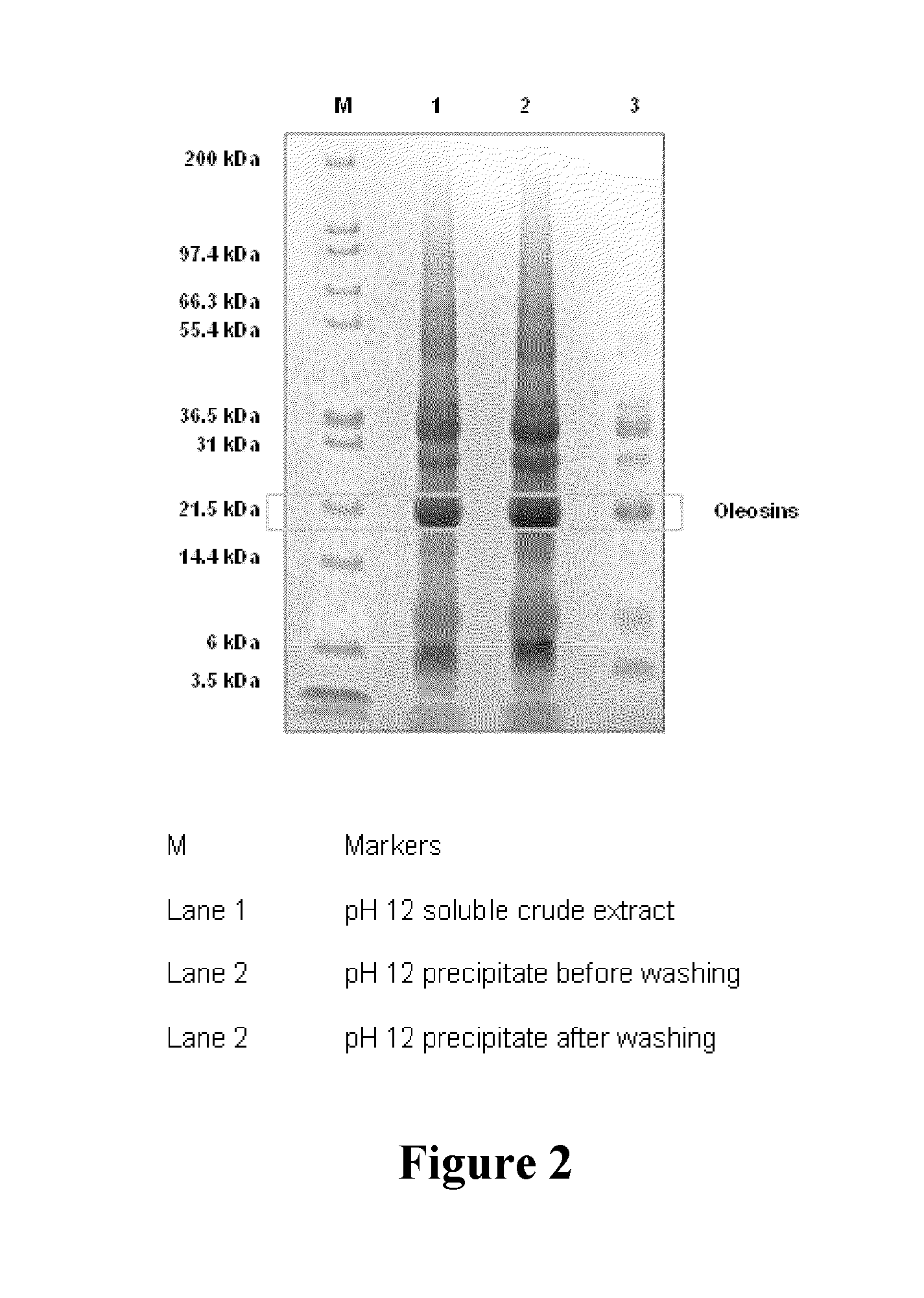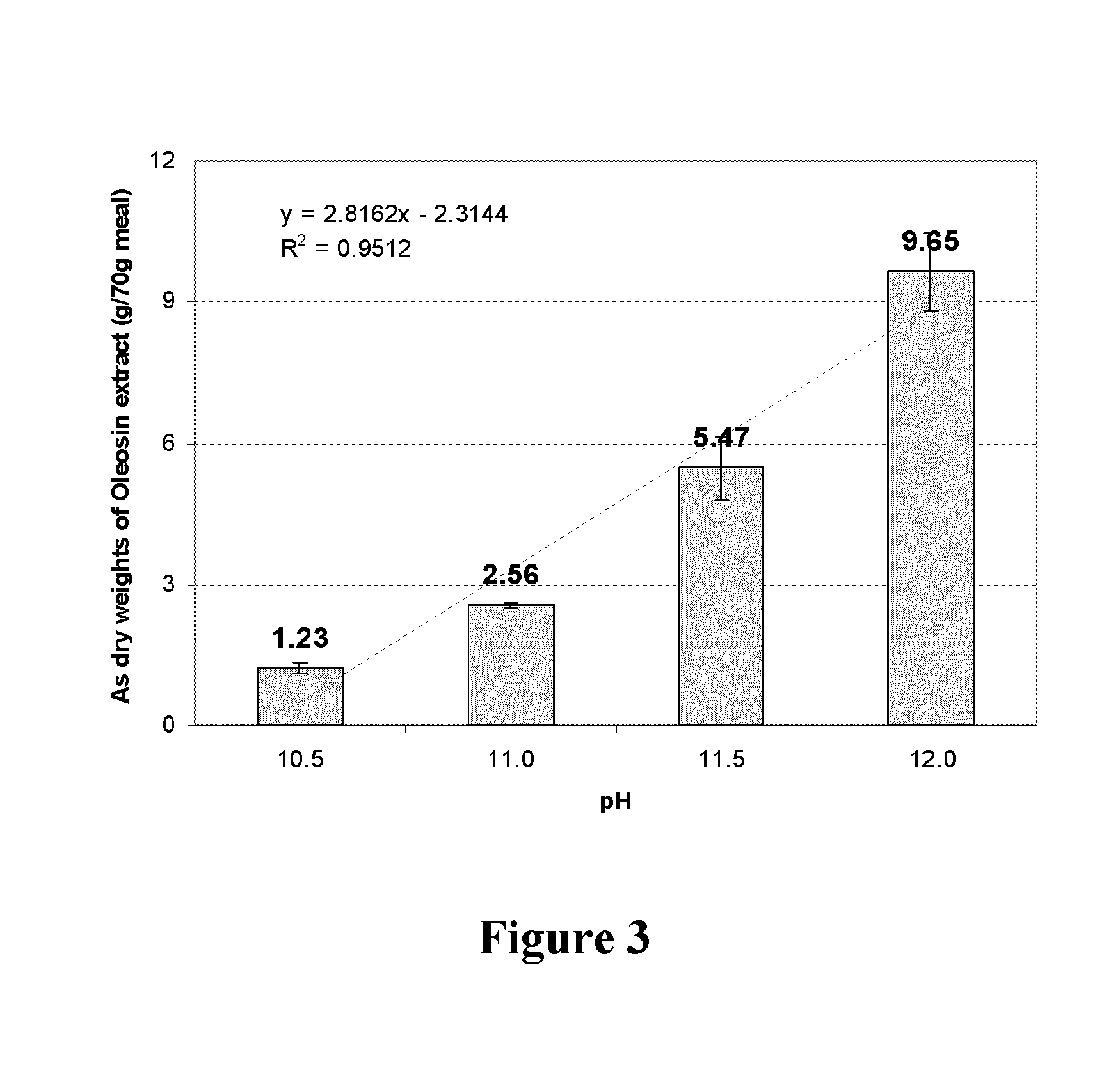Artificial oil bodies
a technology of artificial oil and oil body, which is applied in the direction of edible oils/fats, organic active ingredients, antivirals, etc., can solve the problems of reducing the palatability and shelf life of the product, reducing the ability of obs to be reassembled from its constituents, and extreme susceptibility of these oils to oxidative deterioration during storag
- Summary
- Abstract
- Description
- Claims
- Application Information
AI Technical Summary
Benefits of technology
Problems solved by technology
Method used
Image
Examples
example 1
Materials and Methods
Materials
[0169]Canola (Brassica napus) seed, oil, and meal were gifts by Cargill Australia. The meal was the residue after canola oil extraction by the usual industrial process of mechanical expelling followed by solvent extraction. On arrival, the seeds were sieved to remove straw and other non-seed material and stored at 4° C. until required. The seeds contained 38.0% oil (information provided by Cargill, Ltd) and 25.2% proteins as determined by LECO® FP-2000 analysis. Canola oil was of refined, bleached and deodorized grade, and had TBHQ (200 ppm) antioxidant added. Winterized tuna oil (HT303-4) was obtained from LYSI HF (Reykjavik, Iceland).
Extraction of Oil Canola Bodies
[0170]Natural oil bodies were extracted from canola seeds according to the method described of Tzen (1993) with the exception that the final hexane washing step was omitted. In brief, the seeds were soaked in sodium phosphate buffer (pH 7.5) overnight and homogenized with the grinding medium...
example 2
Extraction of Oleosin from Canola Meal
[0184]FIG. 2 shows electrophoresis results for the protein isolated from canola meal by alkaline extraction (pH 12) followed by precipitation at pH 6.5 and water washing. The molecular weight of oleosin has been reported to in the range 18-20 kDa, and the above isolate contained significant amounts of protein in this molecular range confirming the presence of oleosin. Precipitation of protein at different pH values in the range 3.0-12.0, and subsequent electrophoresis showed that the maximum oleosin recovery was obtained at pH 6.5. Previous studies by other workers have focussed on isolation of oleosin from pre-extracted oil bodies after they have been destabilised by treatment of ethanol or mixtures of chloroform and methanol. To the best of our knowledge, no attempts have been made previously to isolate oleosin from oilseed or meal by aqueous extraction. This could be because oleosins are considered insoluble in water regardless of the pH (Bei...
example 3
Particle Size of Artificial Oil Bodies
[0186]To eliminate any effects of particle size on the rate of oxidation, the particle size of the two emulsions (Tween40 and oleosin) were matched as far as possible (FIG. 5). It was also important to ensure that no separation occurred and the particle size remained relatively constant during storage for the accelerated oxidation study. The droplet size of AOBs made with oleosin as well as that of the Tween40 emulsion remained unchanged during storage over 12 days at 60° C. The uniformity of droplet size during storage at elevated temperatures enabled accelerated oxidation studies based on headspace analysis.
[0187]Clearly, the pH 12-soluble extract was primarily composed of cellular protein. The fraction precipitated also would have contained relatively large amounts of non-oleosin protein. Interestingly, however, when AOBs were prepared using either the pH 12-soluble extract or the pH 6.5-precipitated protein re-solubilised at pH 12, there app...
PUM
| Property | Measurement | Unit |
|---|---|---|
| Fraction | aaaaa | aaaaa |
| Fraction | aaaaa | aaaaa |
| Size | aaaaa | aaaaa |
Abstract
Description
Claims
Application Information
 Login to View More
Login to View More - R&D
- Intellectual Property
- Life Sciences
- Materials
- Tech Scout
- Unparalleled Data Quality
- Higher Quality Content
- 60% Fewer Hallucinations
Browse by: Latest US Patents, China's latest patents, Technical Efficacy Thesaurus, Application Domain, Technology Topic, Popular Technical Reports.
© 2025 PatSnap. All rights reserved.Legal|Privacy policy|Modern Slavery Act Transparency Statement|Sitemap|About US| Contact US: help@patsnap.com



